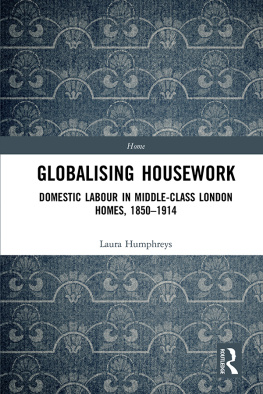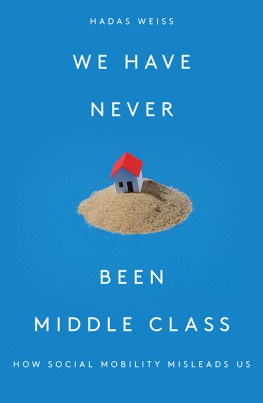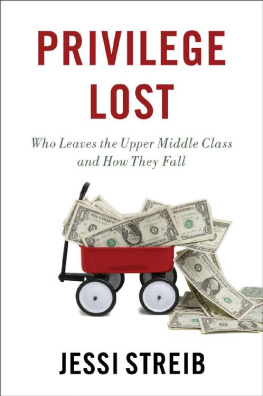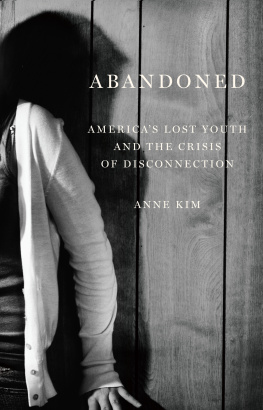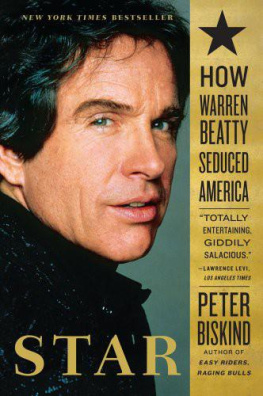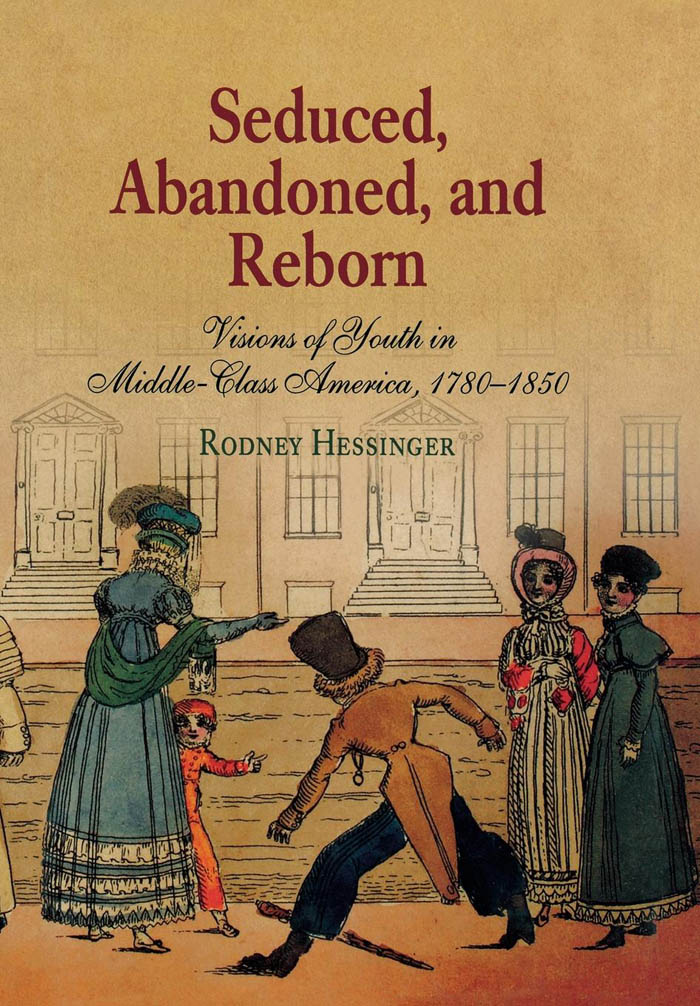Seduced, Abandoned, and Reborn
EARLY AMERICAN STUDIES
Daniel K. Richter and Kathleen M. Brown, Series Editors
Exploring neglected aspects of our colonial, revolutionary, and early national history and culture, Early American Studies reinterprets familiar themes and events in fresh ways. Interdisciplinary in character, and with a special emphasis on the period from about 1600 to 1850, the series is published in partnership with the McNeil Center for Early American Studies.
A complete list of books in the series is available from the publisher.
Seduced, Abandoned, and Reborn
Visions of Youth in Middle-Class America, 17801850
Rodney Hessinger

University of Pennsylvania Press
Philadelphia
Copyright 2005 University of Pennsylvania Press
All rights reserved
Printed in the United States of America on acid-free paper
10 9 8 7 6 5 4 3 2 1
Published by
University of Pennsylvania Press
Philadelphia, Pennsylvania 19104-4112
Library of Congress Cataloging-in-Publication Data
Hessinger, Rodney.
Seduced, abandoned, and reborn : visions of youth in middle-class America, 17801850 / Rodney Hessinger.
p. cm. (Early American studies)
Includes bibliographical references and index.
ISBN 0-8122-3879-6 (cloth : alk. paper)
1. YouthUnited StatesHistory18th century. 2. YouthUnited StatesHistory19th century. 3. YouthBooks and readingUnited StatesHistory. 4. Social controlUnited StatesHistory. 5. Moral educationUnited StatesHistory. 6. United StatesSocial conditions18th century. 7. United StatesSocial conditions19th century. 8. United StatesMoral conditions. I. Title. II. Series
HQ796.H465 2005
305.235'086'220973dc22
2005042228
In memory of Frank Hessinger, Jr.
Contents
1 Victims at the Shrine of Libertinism:
Gender in the Seduction Tales of the Late Eighteenth Century
Introduction
Recording his famous impressions of America in the 1830s, Alexis de Tocqueville expressed surprise at the pervasiveness of American democracy. Its spirit had reached far beyond the realm of politics, extending even into the traditional institution of the family. Commenting on the relations between parents and children, the French aristocrat and traveler observed that while vestiges of parental authority remained, they were exercised only during the first years of childhood. Adults rapidly released restraints on the young: As soon as the young American approaches manhood, the ties of filial obedience are relaxed, day by day. Youth were soon wholly independent: at the close of boyhood the man appears and begins to trace out his own path. In America, Tocqueville concluded, there was strictly speaking, no adolescence.
How had this occurred? Patriarchal control over youth had eroded to an unprecedented extent in the early American republic. To be sure, adults have always had some trouble ruling the young. Colonial America was no exception. By the late seventeenth century, ministers in New England already felt their grasp slipping, finding themselves delivering sexually suggestive sermons just to capture the attention of youth.
A number of factors made the early republic a particularly challenging era for patriarchy. Accepting the lessons of the Revolution, most Americans in the late eighteenth century came to believe that stern patriarchal rule was inappropriate in a democracy. Self-determination over major life choices, like choosing a marriage partner, would belong to the young, not their parents. In the early nineteenth century, the power of elders was further undermined. In the urban Northeast, a cultural marketplace for the attention of youth emerged. The Market Revolution, the rapid expansion of capitalist enterprise and industry, was critical to opening choices for the young. They would be empowered consumers, as elders competed for influence. In the case of publishing, for example, writers began to produce a steady stream of books for young adults. The market for youth went beyond what was being hawked in the storefronts of burgeoning cities. In colleges and churches alike, adults scrambled to gain hold of youth. In the midst of this fight, conservative moralists had to compromise their messages, but they did win various struggles. In fact, their voices would shape generations to come. Bourgeois Americans, those aspiring people who sought to improve themselves and those around them, would simultaneously create and absorb their lessons.
If youth were to be largely independent in America, how could elders hope to guide their actions? This became a central dilemma in emerging bourgeois culture. Persuasion, rather than coercion, became the main means to direct youth. That is, guardians tried to entice youth to listen to them. The challenge was not easy because others were competing for influence. Peers and corrupt elders could lead youth astray, indulging dangerous impulses in the young. To better comprehend this difficulty, consider briefly the world through the eyes of Ashbel Green. A conservative theologian and educator, this Presbyterian minister and president of the College of New Jersey (known today as Princeton) had seen his college wracked by riots and disorder in the early nineteenth century. He wished to reassert Presumably, entering students would want to earn the esteem of their peers and therefore were easily convinced to help carry out troublesome plots. Greens fear that students might be seduced into wrongful behavior was a major refrain in late eighteenth- and early nineteenth-century America. How could Green earn the allegiance and obedience of incoming students? Ironically, Green too would have to enter the business of seduction.
Greens tough rhetoric about the discipline of the house was misleading. It belied the weak position of professors at his school. On the occasion of Greens inauguration, he had also blustered that he would not indulge youth: Now a coaxing system, is exactly the worst kind of a thing that can be called government. He insisted he would not bend: No in every deedI shall coax no oneI shall thank no one for doing his dutyWhy should I? And yet already one could see cracks in his front. He quickly admitted, every one who shall do well will be made happy, while every one who shall excel shall be honoured. Students would come to understand they held the reins.
This dilemma was not simply a problem in the somewhat rarefied world of the early nineteenth-century college. After Ashbel Green left the College of New Jersey, he would face similar developments in religion. In churches, as in schools, adults were pandering to the young. As editor of Philadelphias Old School Presbyterian journal, The Christian Advocate, Green would publish searing critiques of revivalists who were exciting and flattering youth. Green did not struggle alone. In fact, he was one among a large number of outspoken adults who tried to fight the shift in power to young adults. While young men, more than young women, would see their horizons expand in the early republic, both were granted a greater range of choices in the late eighteenth and early nineteenth centuries. In a wide array of arenas, those who wished to guide youth had to compete with those who would seduce them. A surprisingly broad range of writers, people from disparate backgrounds and occupations, spoke in unison of the need to restrain, as well as guard, the young. Didactic novelists seeking to guide young women through courtship warned against the seductive ploys of male libertines. Writers on the dangers of masturbation battled the purveyors of pornography. Orthodox ministers struggled against the emotional appeals of evangelical firebrands. Ultimately, the voices of respectability were forced into the same pandering game. The line between guardian and seducer became blurred.



